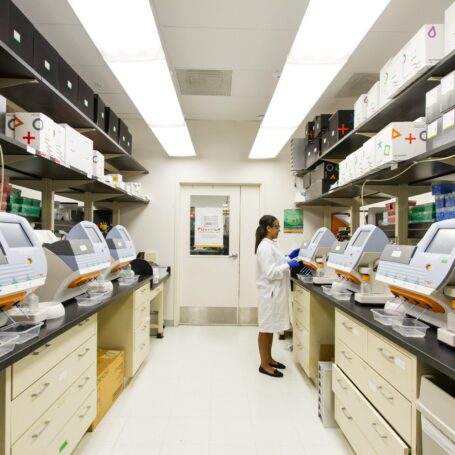Shaken but not scared
David Canter describes being marooned in Narita Airport when the earthquake struck.
Having studied people’s actions in major emergencies as varied as the evacuation from the twin towers on 9/11 and the fire in King’s Cross station in 1987 it was with a mixture of horror and fascination that I found myself in Tokyo’s Narita airport on Friday afternoon when the ground began to shake as if a heavy goods train was passing too close for comfort and the three storey high plate glass window started to wave about like so much thin plastic.
People who spend any time in Japan tend to get blasé about the frequent tremors that rattle bottles and make automatic doors swish open disconcertingly. So the hundred or so people in the departure lounge trying to make arrangements because of delayed flights initially showed little reaction to Friday’s rumblings. But as the earth continued to move in ever more violent waves some people briefly tried to hide under the low airport chairs, but at more or less the same moment we all realised this was ‘the big one’ and ran for the doors, which were now all welcomingly open. Some airport staff, ignoring their own safety, were shouting and gesticulating to get us all out of the building.
The popular image, fanned by disaster movies, is that the second there is the hint of a crisis all social niceties disappear and panic ensues. But many studies have shown that the opposite is the case. Interviews with survivors indicate that existing social relations continue and that wild panic is the exception. However, this is based on interviews after the fact, so being part of it was the sort of participant observation that researchers never wish to experience.
Once the building had settled down and the obvious immediate danger was over the major concern was to find out what happens next. People want to get back to their normal lives as soon as possible. This is when effective communication is crucial. Existing formal roles take on added significance. After all, airport staff are there to help and it is assumed they know what is happening. But it soon became clear that all they knew was that nothing was moving and had no idea what would happen next.
Unlike earlier emergencies I have studied there is now internet access through mobile phones. Word of mouth from those who logged onto news websites revealed that the airport was a marooned island. No flights could land or take off, no transport of any form was available, with rail networks and roads all brought to a standstill whilst the remarkably competent Japanese authorities carried out safety checks. Hotels had no rooms available, either because they were full or because they were checking every room for damage. So for the remainder of the afternoon and into the evening everyone who had been in the airport at the time of the earthquake was corralled into the ground floor arrivals lounge whilst the rest of the building was minutely examined for any signs of danger.
 People just settled into whatever place they could. Children, of course, just getting on with things as if it was the most natural situation for them.
People just settled into whatever place they could. Children, of course, just getting on with things as if it was the most natural situation for them.
Japanese society is very formal with strict codes of behaviour. Emergency crews bow to each other when they first meet on site. Therefore I was not surprised that no voice was raised in anger or anxiety and there was even the odd note of laughter from time to time. Particularly moving were the members of staff who spoke English passing through the crowd to find the few foreigners in order to explain to them what little information had been announced over the public address system.
It is only when there may be competition over resources that social norms may start to fray at the edges. This potential for social breakdown was first revealed when bottles of water was first distributed. I harbour the fond impression that in the UK people would have immediately formed a polite queue, but at Narita anxiety that there may be limited supplies of water produced a crowd grabbing from the box.
 Yet most took just a bottle for themselves and their friends. I saw little sign of hoarding. Once it became clear that there was more than enough to go round the distribution became more controlled. But the same thing happened with the distribution of Ritz biscuits that for some reason was the only food available and then with the sleeping bags that were eventually distributed when it became clear that we were all there until at least the following day. Eventually the authorities realised what was happening and airport staff organised an orderly line through the terminal building. The fascinating thing was that once such authority was politely imposed people accepted instructions calmly.
Yet most took just a bottle for themselves and their friends. I saw little sign of hoarding. Once it became clear that there was more than enough to go round the distribution became more controlled. But the same thing happened with the distribution of Ritz biscuits that for some reason was the only food available and then with the sleeping bags that were eventually distributed when it became clear that we were all there until at least the following day. Eventually the authorities realised what was happening and airport staff organised an orderly line through the terminal building. The fascinating thing was that once such authority was politely imposed people accepted instructions calmly.
The boxes, the bottled water and biscuits brought in were jealously guarded by the young travellers who decided they would help insulate them from the cold of the floor that they would spend the night on. Space to lie down comfortably was also a resource over which there was some competition. Groups of teenage travellers, most notably young women, quickly used the cardboard sheets and their suitcase to demarcate their territory.
 Markers left by people who went to the toilet or to queue for a phone, though, were respected as they would be in any normal situation.
Markers left by people who went to the toilet or to queue for a phone, though, were respected as they would be in any normal situation.
The actions of airport staff to give guidance where they could, and the way people who were already part of a group or family pulled together to help each other, was the most distinct indication of how our existing expectations of each other, our social roles, shapes actions in emergencies. If anything social norms become more entrenched when everyone feels some potential threat to their comfort, convenience or survival. Strangers were polite to each other and offered help or information when requested, but it was group membership that dominated.
Perhaps having a role in an emergency helps to cope with the trauma? But the next morning the airline staff, who showed in the darkness around their eyes that they too had slept little on the airport floors, were all breezy efficiency. But the edge was taken off their distant formality. We had all been in this together.
Images copyright of David Canter.
































































































Glad you emerged relatively unscathed. one of the best things about rise of new technology is that it is possible for family and firends to find out more quickly what is going on. although on a downside they may know more of the horrors. some examples of this use of social media can be seen at for links to news stories and social media sources see this page from New York Public Radio which has a comprehensive collection of links. http://www.wnyc.org/articles/its-free-country/2011/mar/11/major-earthquake-and-tsunami-video-and-resources/ They include news sites, twitter and the Google Person Finder http://japan.person-finder.appspot.com/?lang=en site which relatives have been using to locate… Read more »